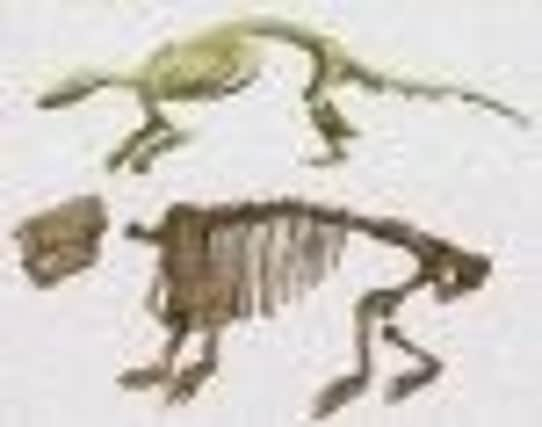‘Badger’ fossil may hold key to the secrets of evolution


Ernanodon antelios lived only a few million years after the dinosaurs became extinct 65 million years ago.
Scientists unearthed an almost complete fossil skeleton of one of the creatures from the Naran Bulak region of southern Mongolia.
Advertisement
Hide AdAdvertisement
Hide AdA study of the bones, published in the Journal of Vertebrate Paleontology, shows that Ernanodon was built for digging, with strong arms and large claws.
Experts believe it may have been a very distant relative of present-day pangolins, or “scaly anteaters”.
The fossil remains were found in rocks deposited 57 million years ago during a period known as the Palaeocene Epoch.
Scientists made detailed comparisons between the bones of Ernanodon and those of modern mammals.
Lead researcher Dr Peter Kondrashov, a bone specialist from Kirksville College of Osteopathic Medicine in Missouri, US, said: “Only a handful of Asian Palaeocene mammals are known by their post-cranial skeleton, which makes Ernanodon a unique source of very important information about its habits, lifestyle and affinities.
“Few other fossil mammals presented as many controversies in the scientific world as Ernanodon did and we are glad the new skeleton helped us resolve them.”
An earlier damaged Ernanodon specimen discovered by Soviet scientists in 1979 remained unstudied for more than 30 years.
Researchers say it was highly specialised for digging, whether for food or shelter or both. The animal’s large claws and unusual teeth have led to disagreements about its evolutionary links.
Some scientists believe the creature was an ancient relative of armadillos and anteaters, others suspected it was more closely related to pangolins.